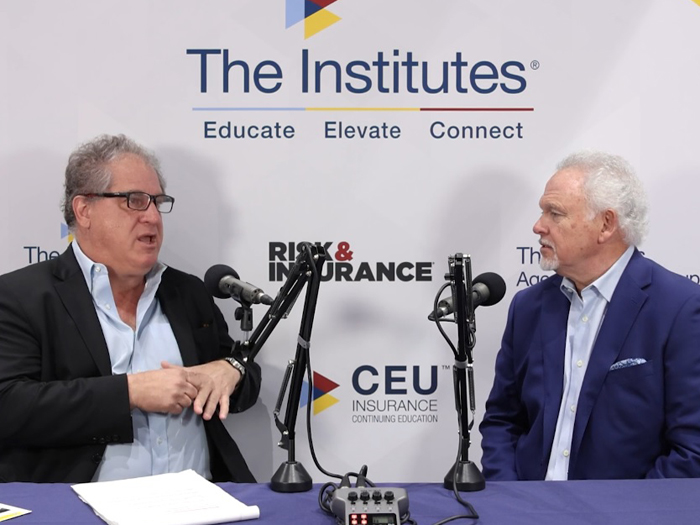Workers' Comp Leadership
Want Better Outcomes? Use the Right Tools for the Job

When Dr. William Gaines started his career, indemnity was “king.” But the emphasis in workers’ comp has changed in the decades since.
“It’s focusing on the right medical care at the right time for the right reasons,” Gaines said. That’s why having the proper resources to manage claims is essential.
“That has not changed one bit,” he said. “What has changed is we’re using much more sophisticated tools to guide these injured workers back to work.” Gaines is credited with helping to implement the following tools during his 12 years with Liberty Mutual:
- Data analytics. The company says it was the first property/casualty insurer to use the “sophisticated data analysis long standard in the group medical industry” in the workers’ comp space, according to a statement.
- Predictive models. Generated through the company’s data analytics capabilities, a variety of predictive models have been created that impact claims. For example, one “quickly identifies workers’ compensation claims likely to become more expensive than the average cost of similar claims. Claims managers are notified of these claims and the resources required to better manage them.”
- Outcomes based networks. The company uses its data analytics to build networks of providers more likely to use evidence based medicine.
- Prescription management. The company says its strategies helped reduce the amount it spends on narcotics by 13 percent last year.
As the newly appointed medical director of Liberty Mutual’s Commercial Insurance strategic business unit, Gaines sees himself as both a player and a coach. In addition to managing the company’s nine regional medical directors, he will continue many of the day-to-day functions he’s been doing in his 12 years with the company.
“I’ll be talking with providers, working with our nurses and claims managers,” Gaines said. “I have to be involved in working claims if I’m going to have the ability to work with medical directors and guide them.”
Opioids
“When I talk about trends, [working] in the trenches and working with data, one thing that’s huge is the issue of … the inappropriate use of opioids in workers’ comp,” Gaines said. “There’s a lot more awareness on the part of treating providers in the workers’ comp system and employers that opioids have a very negative impact on injuries. But we have a lot more work to be done to develop a consistent basis and medical treatment guidelines.”
Gaines said getting the message to all providers is no easy task.
“Comp is a subset of group health,” he said. “We focus on group health and on workers’ comp with the hope that all of us drive provider awareness [to a] more conscious evidence-based prescribing of opioids.”
Gaines said identifying claims involving prescriptions from multiple physicians is a red flag. Working with pharmacy benefit managers is key to reining in opioid abuse.
“The only way you can manage opioids effectively is [by having just] one person prescribing them, confirming they are taken appropriately, and [that the opioids are] not creating adverse effects,” Gaines said. Having “multiple people is a prescription for failure.”
Psychosocial Issues
Another hurdle to achieving superior outcomes is psychosocial issues. “If you look at where problems occur in work injuries, the underpinning of why they don’t get better or return to work, it all revolves around an employee’s psychological makeup or social situation away from work,” Gaines said. “Not every injury is going to have the same response or outcome.”
Working in claims on a daily basis gives Gaines the opportunity to see differences in how injured workers are affected. One person with low back pain deals with it and doesn’t miss any work while another develops catastrophic thinking.
“Our challenge is to be able to recognize this early and intervene early with the right resources,” he said. “In the old days of comp, we talked about claims managers who could smell these early on. Now, with the complexity of workers’ comp issues, you just can’t rely on people to pick up on that.”
Gaines said that’s why Liberty has developed tracking tools — data analytics and predictive models — to enable claims managers and nurses and medical directors very early to identify if a claim is going off track.
Part of the answer lies in working directly with employers and helping them understand the importance of having supervisors communicate with employees. The insurer acts as a bridge between providers and employers.
“The way it is, there are a whole lot of providers that don’t understand occupational medicine is different from group health,” Gaines explained. Our “medical providers may be talking to the provider about things they are seeing and working with them, but at the same time, we may be talking with the employer to help them understand the person is still functionally able to come back to work.”
Predictive models supported by data analytics have been the single most important key to help spot a problem in a claim early on. While some of the more experienced claims managers can do that, newer ones typically cannot.
“It’s tragic if someone has a simple back strain and they never go back to work because we didn’t treat the psychological issues. You have to develop more of a specialty mindset. You can’t look at every claim the same way. You have to combine experience, data analytics, and predictive modeling.”










